This was the main place David Hufton and myself wanted to visit on our road trip. We had continued on our way along the Sturt Highway via Hay to Balranald. There we called into the Discovery Centre – which is not only the local information centre, but also a great cafe with hot showers in the adjoining toilets (which we took advantage of later on the trip).
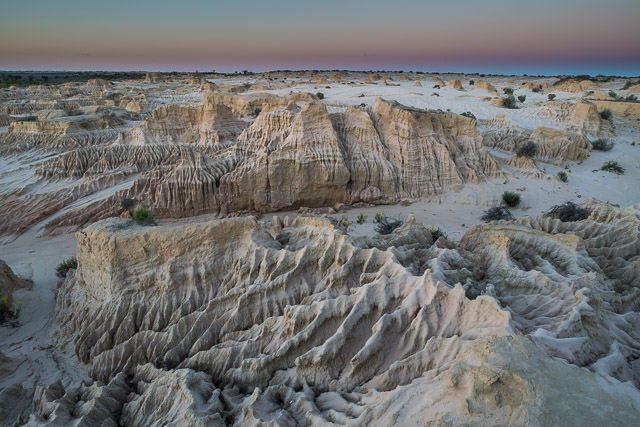
At the Discovery centre, we could obtain the latest information on the road conditions and the status of the national park. We heard that the park was open, but one of the roads going into the park seemed to be closed. Outback roads are often closed when it rains, as the road would soon be wrecked by vehicles if they drove along it in wet conditions. The road that was closed seemed to be the main road into the park from Balranald. But it sounded like an alternative road was still open and OK for 2WD cars. The other alternative was to drive further to Mildura and drive to the park from there – but that was a lot further out of our way.
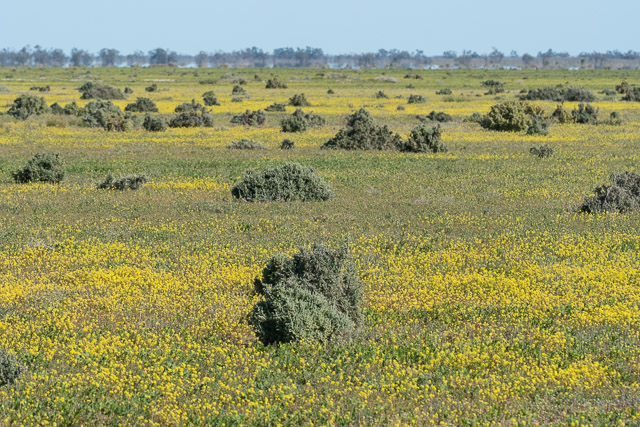
We filled the car with petrol and also took a container with 20 litres with us. This would allow us to drive to and from Lake Mungo and also do a 60 km loop drive in the park. We also carried about 40 litres of water, but as it turned out – there was plenty from tanks at the camping ground.
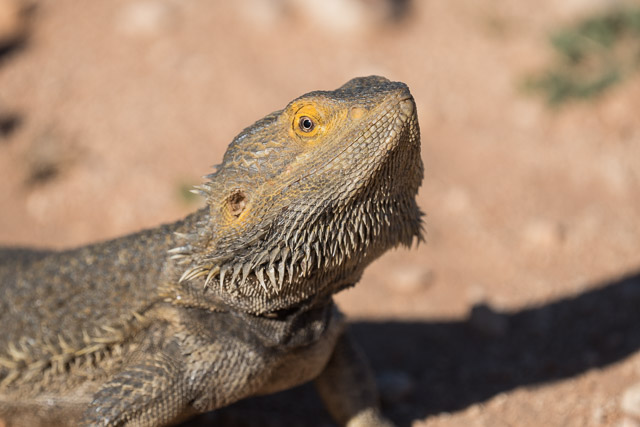
It was an interesting drive from Balranald to Lake Mungo. On the way we stopped a few times for photos – looking at interesting lizards, birds and the nearby vegetation. Earlier rain had resulted in a great display of wildflowers.
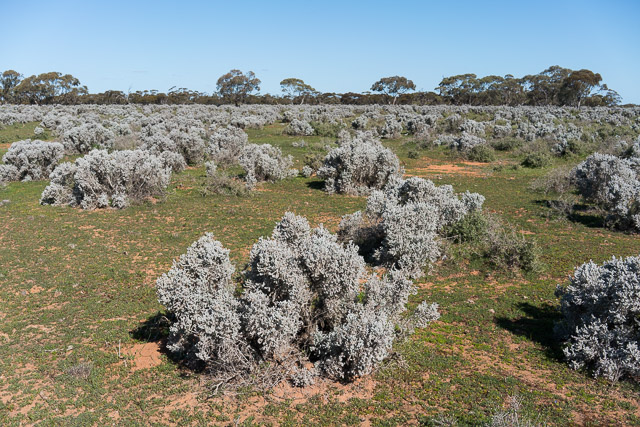
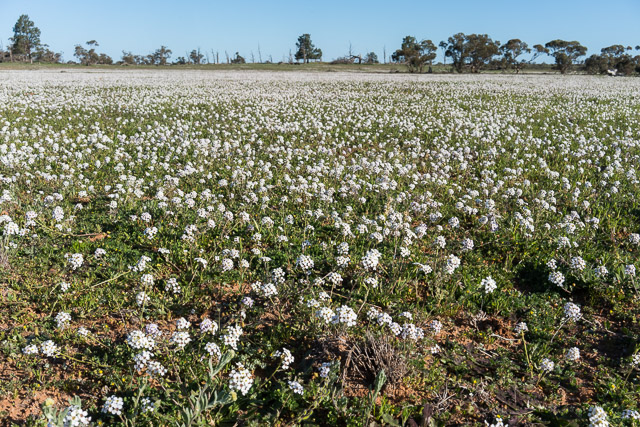
We arrived at the visitor centre in the mid afternoon. We had a look around, paid our camping fees and then headed to the campground. There was plenty of room and a lot of nice sites. Most of the other campers seemed to be grey nomads.
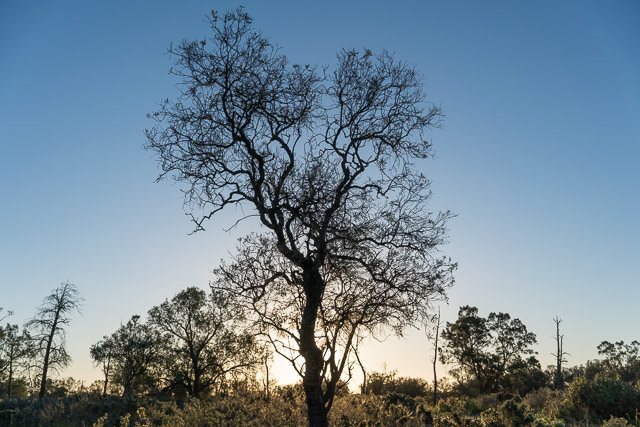
Belah
A short nature walk near the campsite was very worthwhile – we walked it several times during our stay. The signs on it meant we could learn a few of the plant names – Rosewood and Belah (Casuarina cristata) and lots of native Cypress Pines. Under the trees were many types of Bluebush (saltbush).
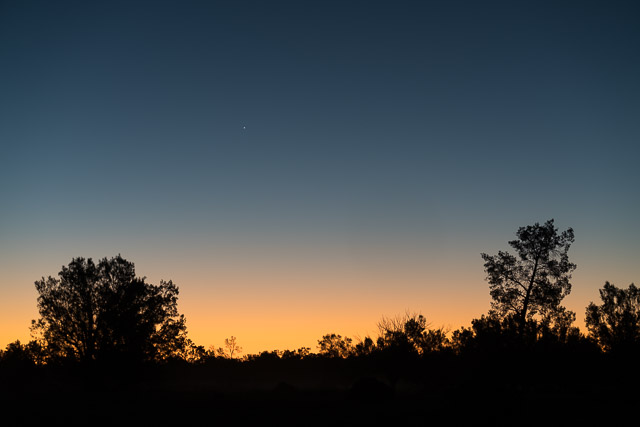
The first night was quite cold – the temperature dropping to about 1° C. It was also very still. We got up early – in time for sunrise, but we were in the wrong place. We both were taking a few photos around the campground, and then noticed as the sun got higher that there was an incredible glow in the east. A strange the of mist was filtering through the trees.
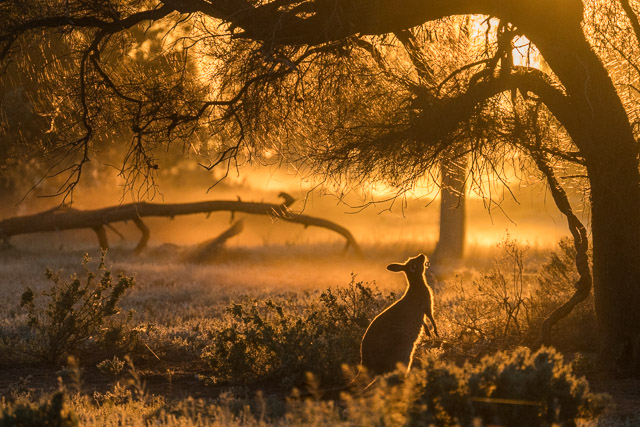
We headed towards it with our cameras and ended up following a trail to the nearby Mungo Lookout. From it we could see the whole of Lake Mungo – it was full of mist. A magnificent site! I perhaps should add that Lake Mungo is one of the Wilandra Lakes – a series of dry lakes that are now a World Heritage Area. Many thousands of years ago, when the climate was much different, these lakes were full of water and would have been a paradise for the aborigines who lived on the shores.
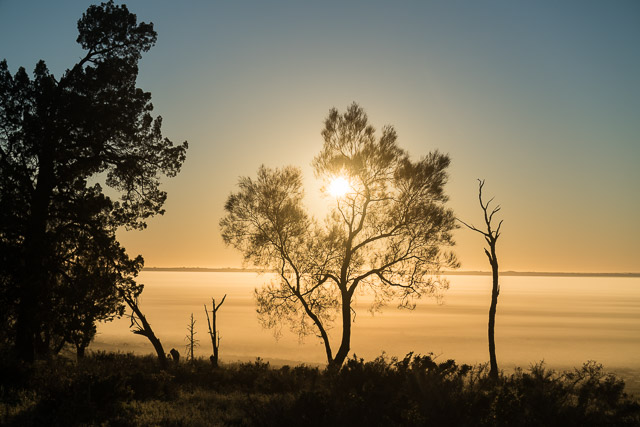
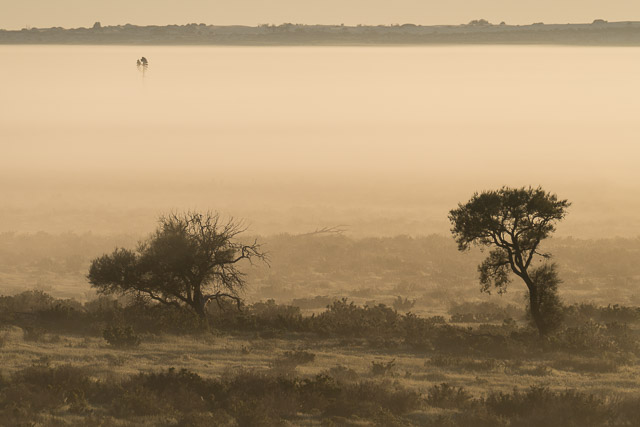
We returned to that lookout for the next two sunrises – but they was no more mist.
We both wanted to do the aboriginal interpretation tour of the Walls of China, but had been told the day before that he staff were busy on this day with a school group (a group of teachers it turned out), so we had scheduled it for the day after. This left the day free for the long drive along the Mungo Track right around the Lake.
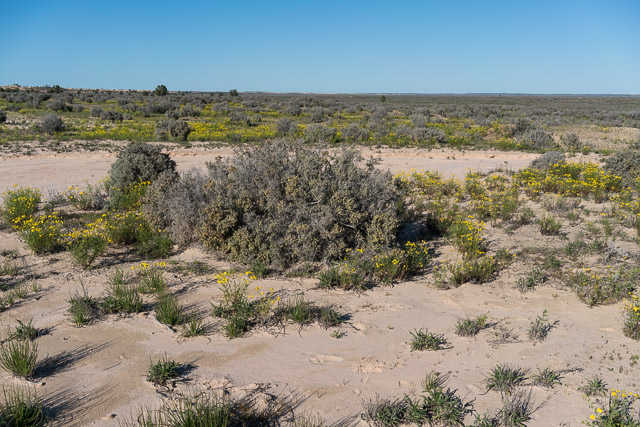
Lake Mungo
This turned out to be very worthwhile and showed us a the full range of environments you can see in the area.
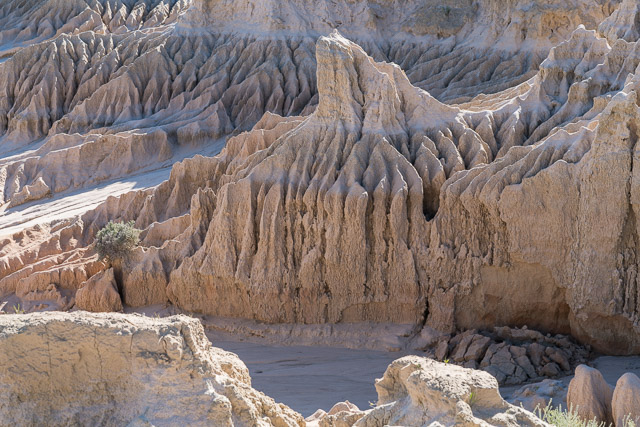
Part of the Wall of China
We stared off driving across the dried up lake bed to the large lunette on the far side. All these dried up lakes seem to have lunettes – areas of sand dunes on their eastern sides, formed by the prevailing winds. The one at Lake Mungo is very famous and called the Walls of China. It initially became famous when it was featured in some of Russell Drysdale’s paintings. However its real significance was discovered later when skeletons were unearthed. Not by digging or excavation – but by natural erosion. They were 40,000 to 50,000 years old. They are the oldest known fully modern human remains discovered outside Africa. One showed the earliest evidence in the world of ritual cremation. There has been continual aboriginal occupation of the area for around 50,000 years. This is why the area is so significant.
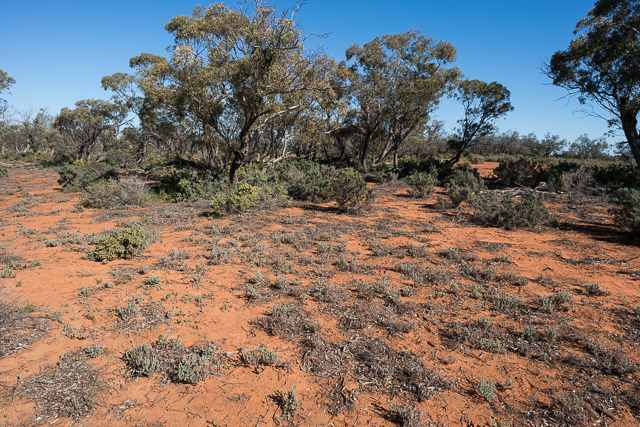
Mallee Country
At the Walls of China, we stopped off at a lookout. You have to remain behind a viewing platform unless you are accompanied by an authorised guide. This seems fair enough – as the residuals of the Wall are quite delicate and the whole area is very culturally important to the traditional owners.
We then drove a few more kilometres to another lookout on the loop – where the road crosses the lunette – Red Top Lookout. This gave us a better view of the erosion features of the Walls of China. From the point – the loop road is one way only, so we continued on through arid mallee country.
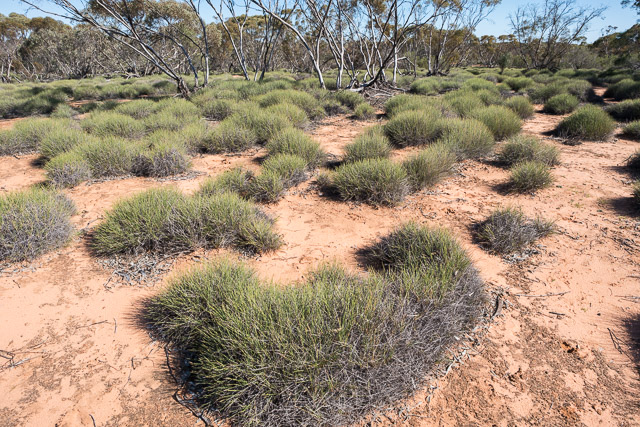
Spinifex and Mallee
We had lunch at the second campsite in the area – Belah Camp, which is about half way round the loop. Nearby we had completed a short walk through the mallee trees. The mallee tubers apparently provided a good source of water to the aboriginals.
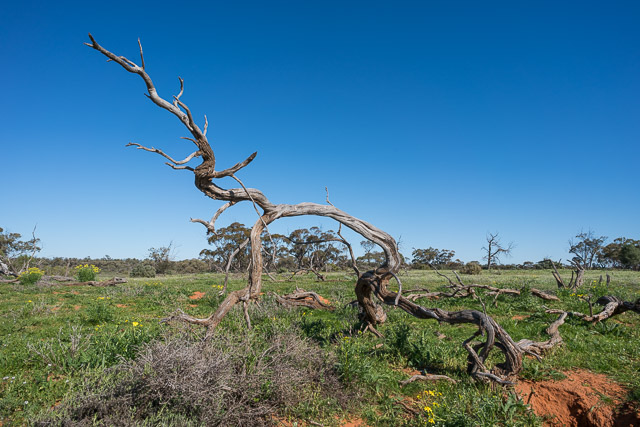
Further around, we stopped off at Vigars Wells. Here we could walk up onto the sand dunes of the lunette -and very interesting they were.
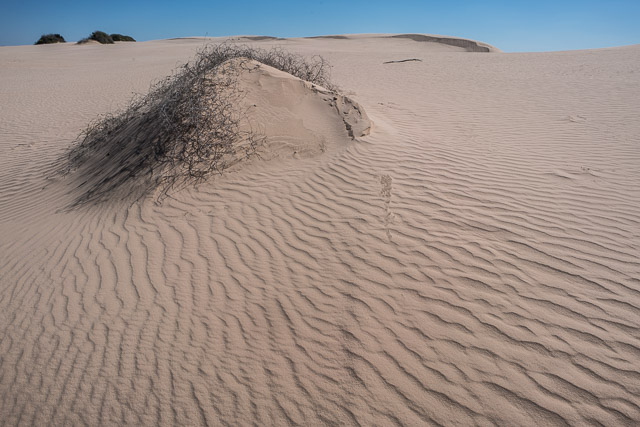
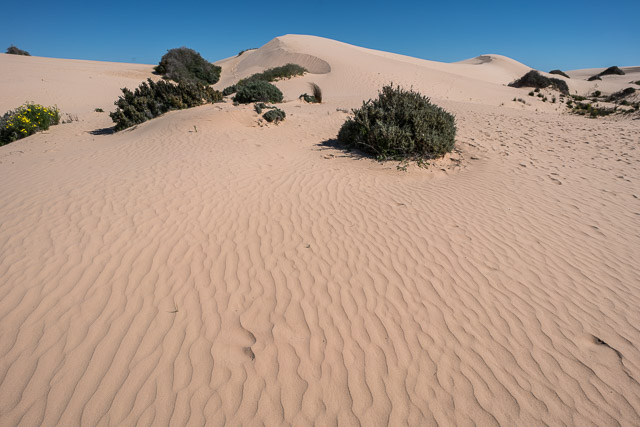
Amazing sand patterns, and amazing raptors flying overhead.
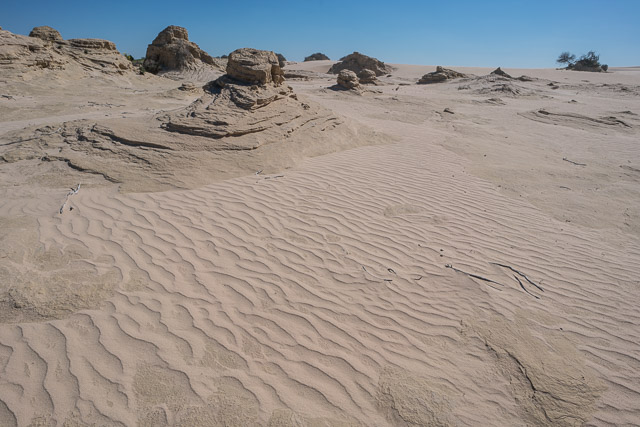
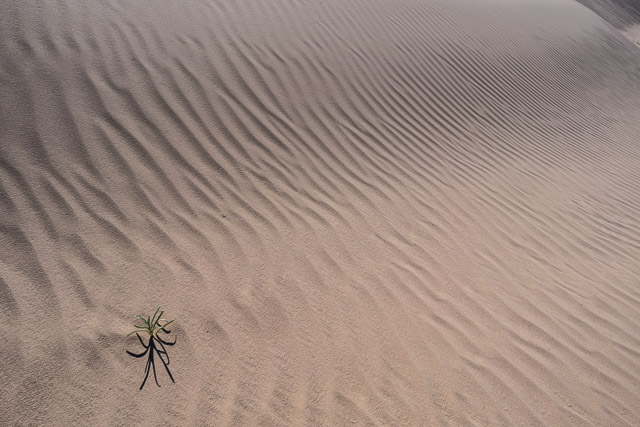
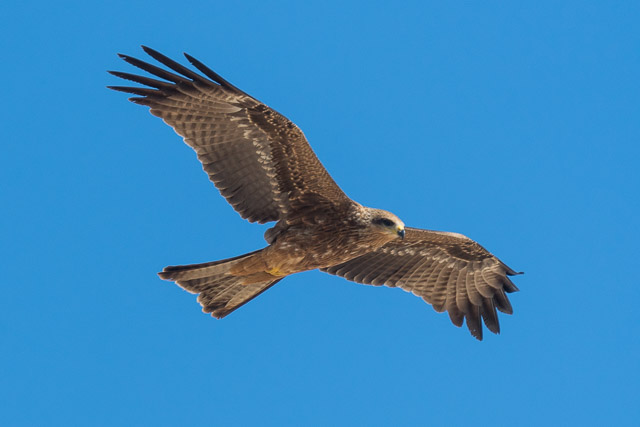
The road provided a good place for lizards to bask in the warm sun. More interesting photographic subjects.

There was also much to see at the old Zanci Station – a lot of history of grazing and European occupation.
Back at the visitor centre, we headed in the late afternoon back to the first Walls of China Lookout for sunset. This is the best time of day to photograph the interesting erosion formations.
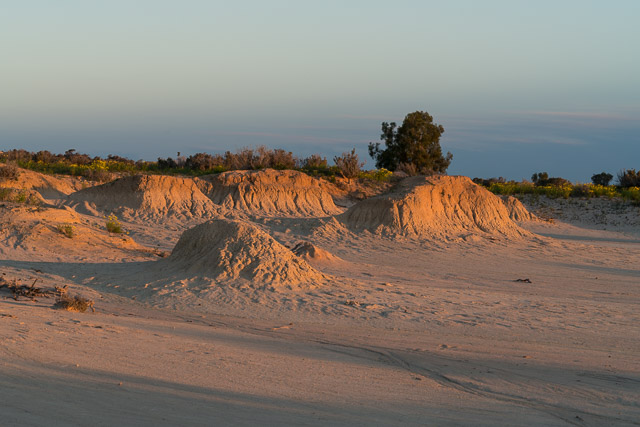
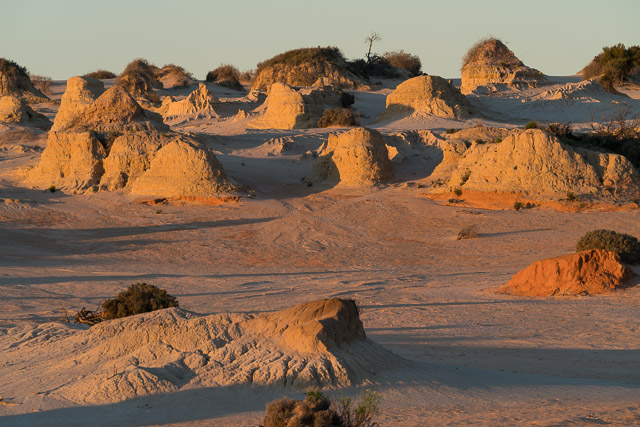
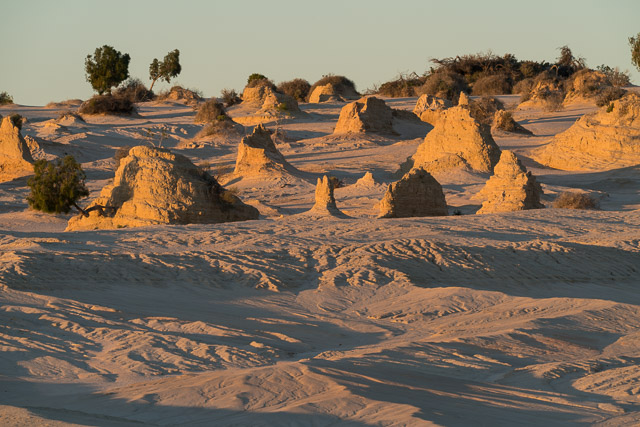
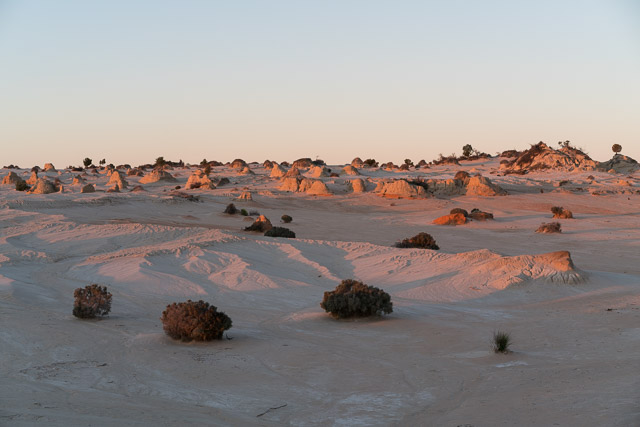
At dawn the next day, we headed straight to the Mungo Lookout. This time we met a big group there – teachers from Victoria on a spiritual retreat.
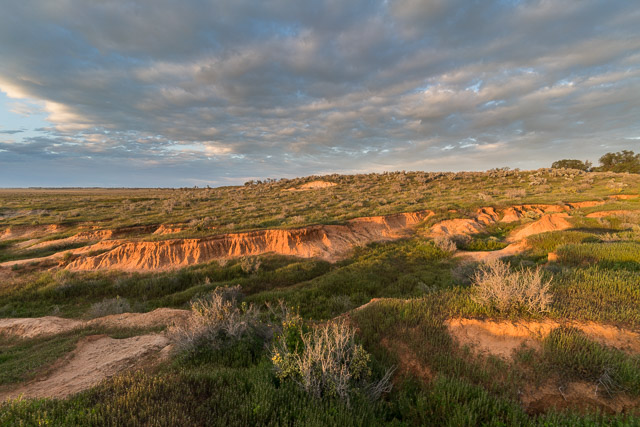
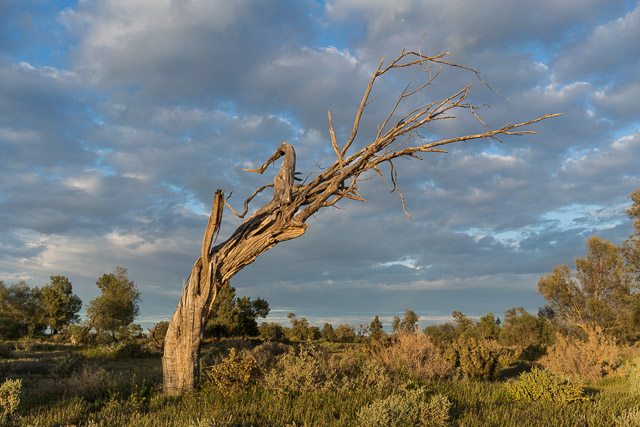
Our tour onto the Walls of China was scheduled for that afternoon, so we spent the morning photographing around the camp ground and at nearby Lake Arumpo. Both areas were rich in birdlife and wild flowers.
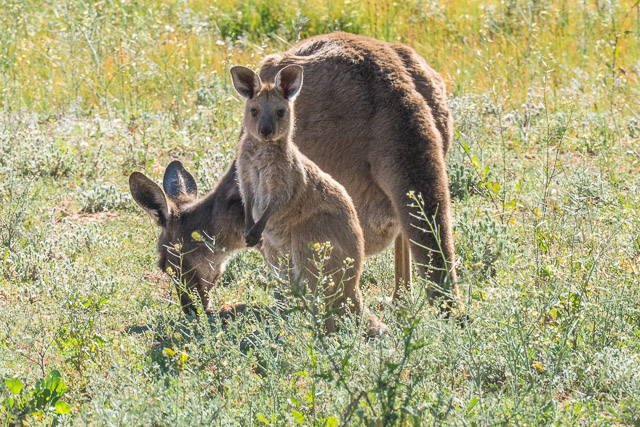
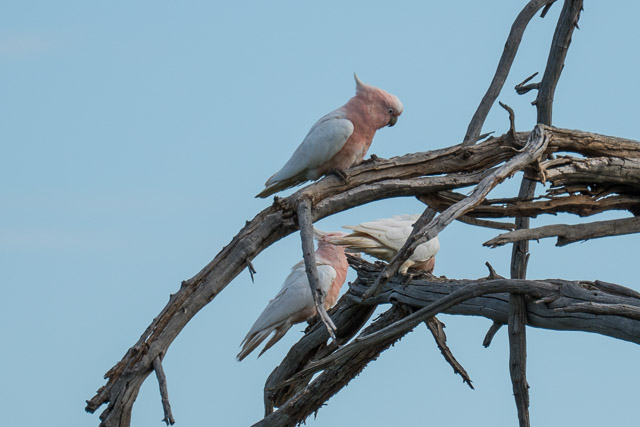
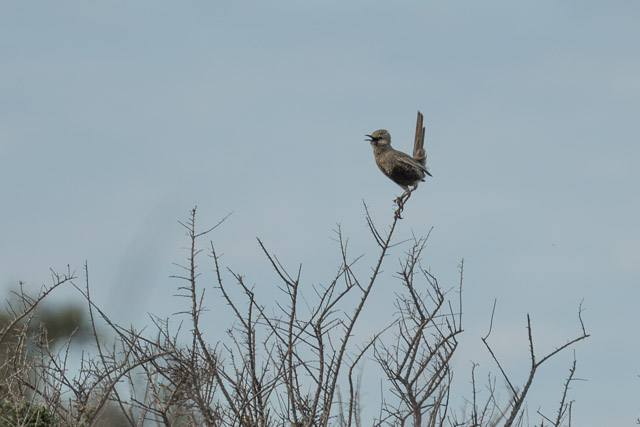
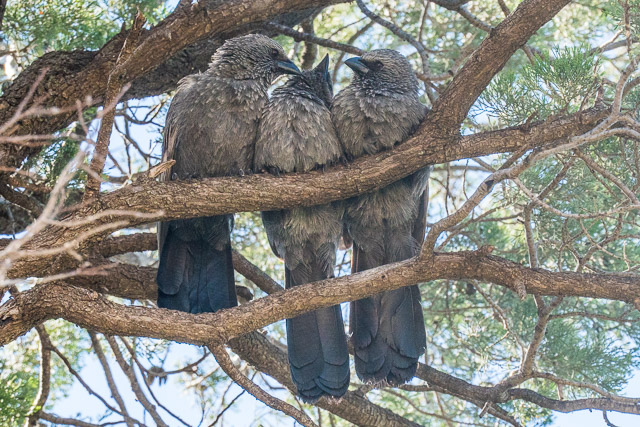
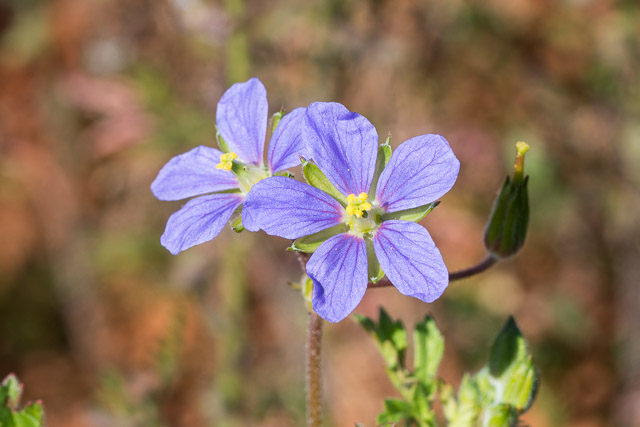
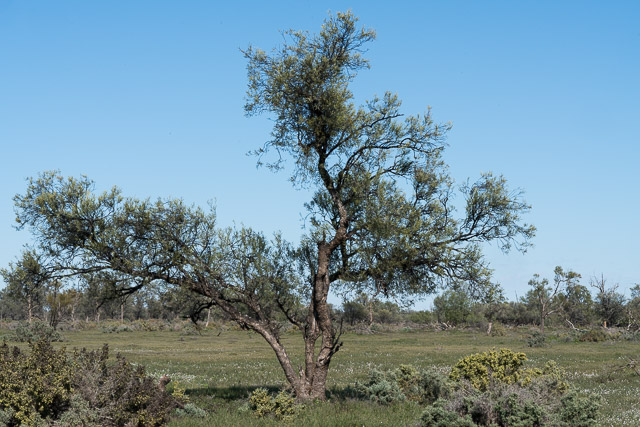
After lunch we headed to the visitor centre for a shower and then for the tour. Our guide was one of the aboriginal rangers and she provided a wealth of fascinating information about aboriginal history and culture. This was very worthwhile. Walking up the lunette, she showed us old fireplaces unearthed by shifting sands and clay. Some had lots of mussel shells that showed us how differs the environment had been. Higher up, near another fireplace were the remains of emu egg shells. It seems that this was food given only to the elders, and has only been found in the one fire site.
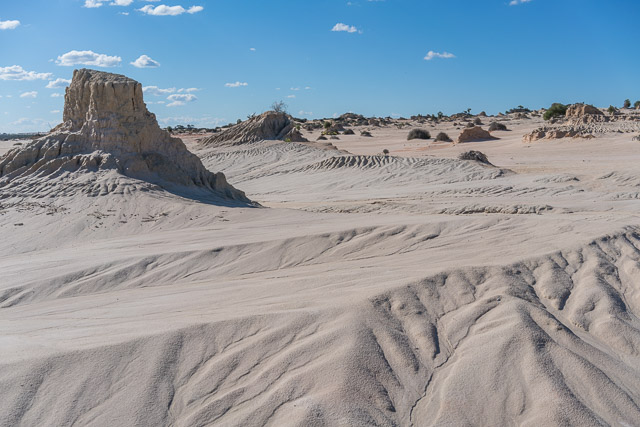
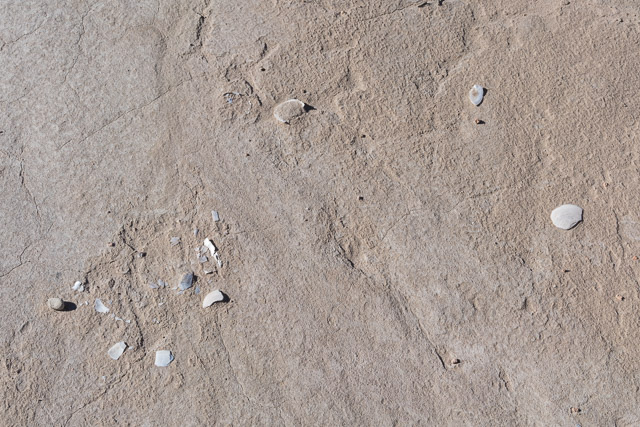
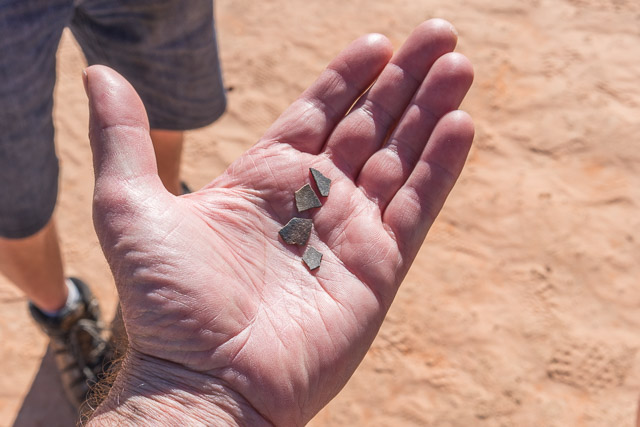
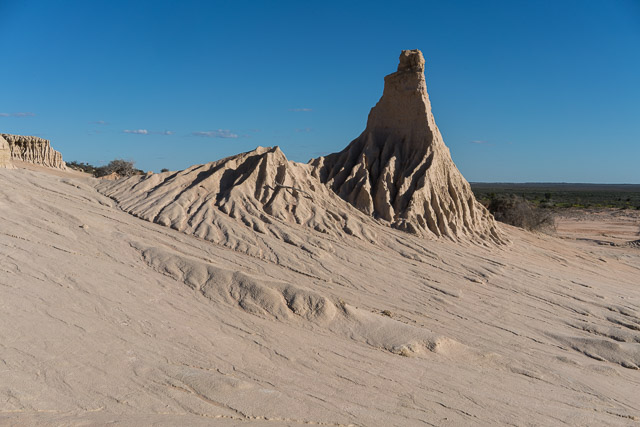
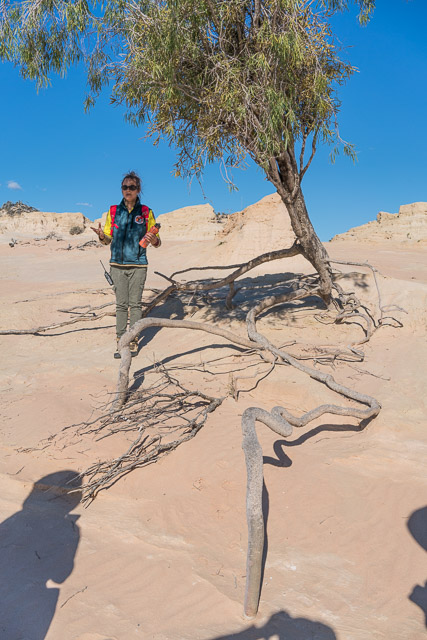
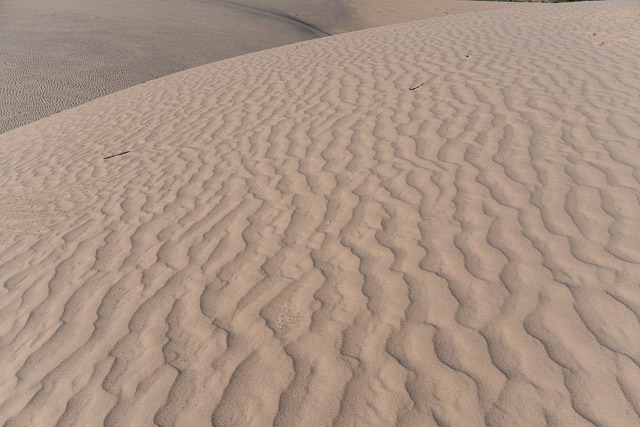
After the tour, we headed back to the second lookout – Red Top Lookout for sunset photography. The golden hour was very good.
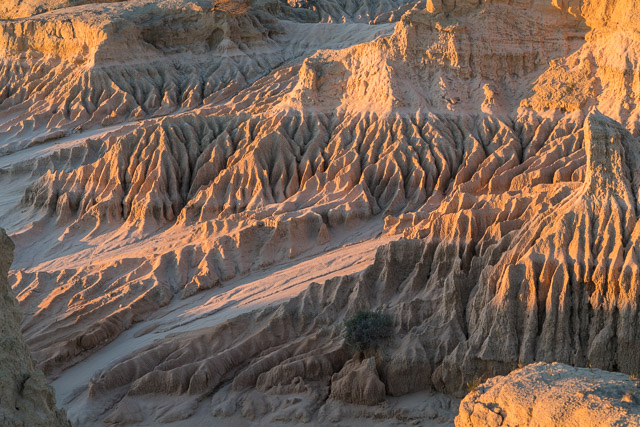
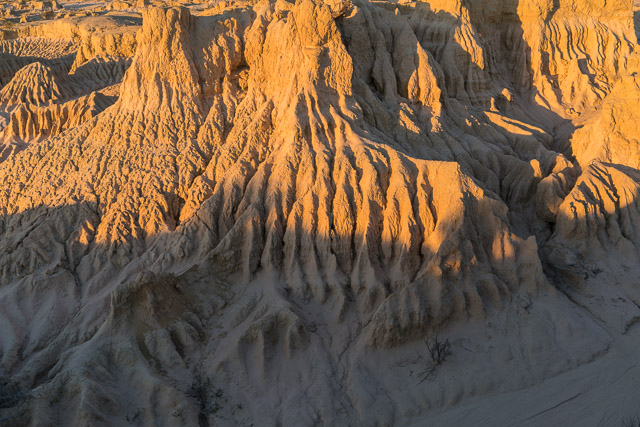
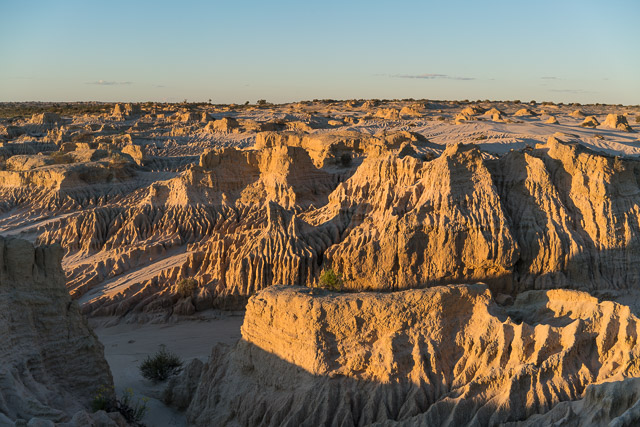
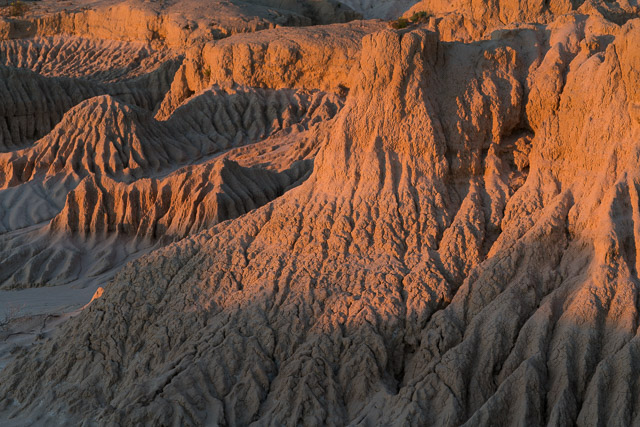
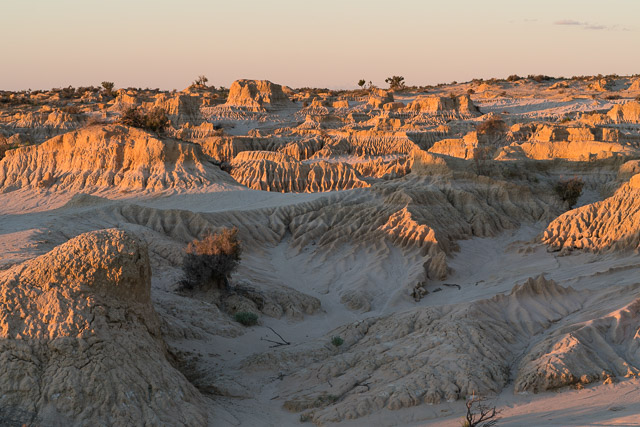
Another sunrise at the Mungo Lookout the next morning. Then back to camp to pack up. Rain was forecast for that evening and the next day – that could mean that the park and the roads in and out could be closed. So we reluctantly packed up and headed out to Mildura.
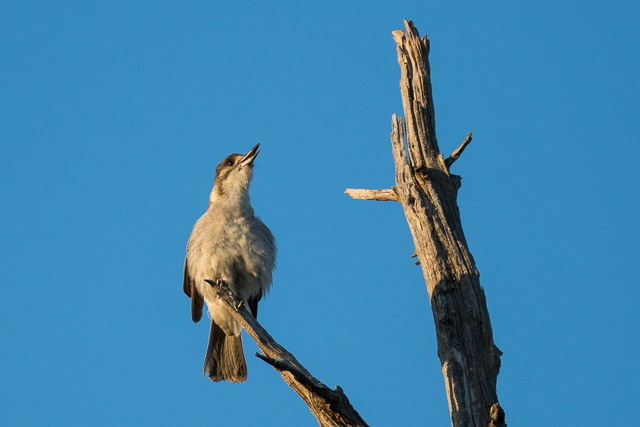
On the way, we stopped a few times for more photographs. One interesting thing we saw was a large wedge tailed eagle being attacked by a large group of small birds. It was fascinating to watch and lasted quite a few minutes as the small birds chased the eagle off. Luckily the eagle flew more or less along the road for a while – so I was able to get some photos as we drove along.
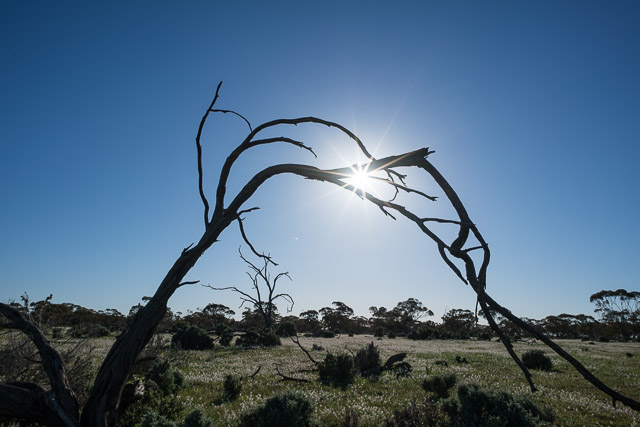
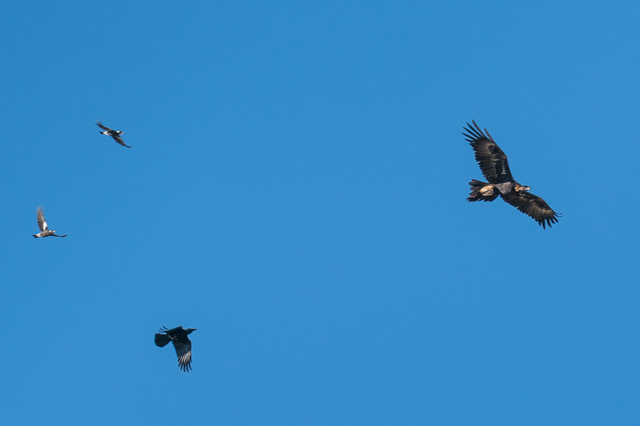
A lot more photographs of this incredible place are online on my website starting on this page.

Lovely photos and great commentary. Very useful as I start to plan our trip to Mungo for later this year.
lovely pictures and a great place to visit.. i never know about this place but it is amazing specially those wild flowers have such a beauty and birds are beautiful plus cute specially the parrots